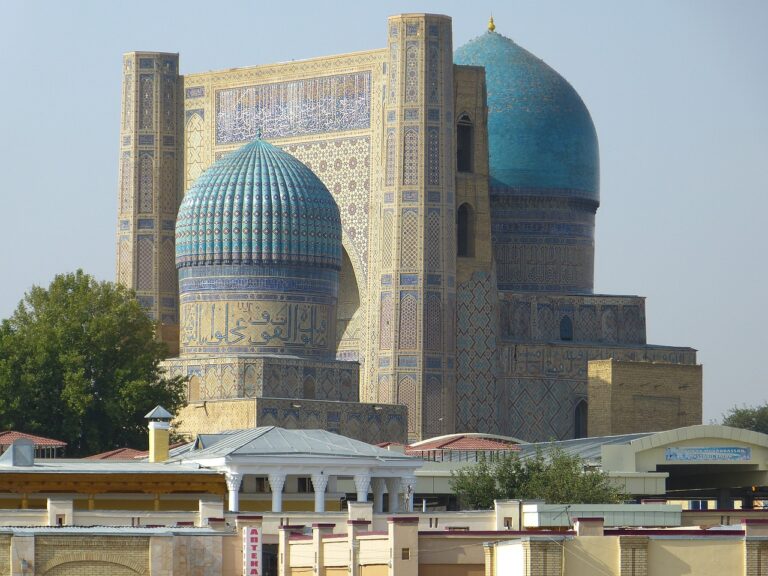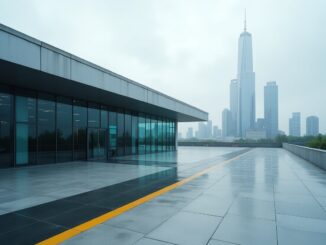Uzbekistan’s upcoming parliamentary elections on October 27, 2024, are a crucial moment in the country’s evolving political landscape.

Topics covered
Uzbekistan’s upcoming parliamentary elections on October 27, 2024, are a crucial moment in the country’s evolving political landscape. The Central Election Commission (CEC) recently cleared five political parties to compete in this election, which will select 150 members of the Legislative Chamber of the Oliy Majlis, along with nearly 6,000 members of local councils. This election represents the most significant political event in Uzbekistan since President Shavkat Mirziyoyev initiated sweeping reforms aimed at modernizing the country’s political system and transitioning toward a more open and competitive democracy.
The five parties that qualified to participate, after submitting over the required 40,000 signatures through a digital portal, are the Movement of Entrepreneurs and Business people – Liberal Democratic Party of Uzbekistan (O’zLiDeP), the Democratic Party “Milliy Tiklanish,” the Ecological Party of Uzbekistan, the People’s Democratic Party of Uzbekistan (PDPU), and the Social Democratic Party “Adolat.” These parties reflect a broad spectrum of political ideologies, marking a move toward pluralism in a country historically dominated by a single party.
A Pluralistic Political Landscape
The inclusion of five distinct parties in the 2024 parliamentary elections signals the deepening of pluralism within Uzbekistan’s political system, a significant shift from the country’s past. Under the long reign of the late President Islam Karimov, Uzbekistan was an authoritarian state, with limited political participation and tight control over opposition movements. The political environment began to shift with the ascent of President Mirziyoyev in 2016, who implemented a series of reforms to liberalize the economy and open up the political
space.
Mirziyoyev’s reform agenda has created an environment where political parties, including opposition movements, have a chance to operate more freely. The five qualified parties represent different social, economic, and political priorities, offering voters a choice that was largely absent during Karimov’s era. Azamat Pardaev, Director of the Center for the Analysis of Democratic Processes, noted the significance of this diversity: “The five parties approved for participation in the parliamentary election offer citizens a range of choices as we would
expect in any properly functioning democracy.”
The Five Competing Parties
O’zLiDeP, the Movement of Entrepreneurs and Businesspeople – Liberal Democratic Party of Uzbekistan, is closely aligned with President Mirziyoyev and represents the dominant force in the country’s politics. The party is the driving force behind the president’s liberal economic policies, promoting entrepreneurship, business development, and modernization. O’zLiDeP is widely seen as the party of power, and its base consists primarily of the business community and reform-minded voters.
Milliy Tiklanish, the Democratic Party, is a nationalist party that emphasizes the preservation of Uzbek culture and national identity. The party appeals to more conservative voters, particularly those in rural areas, who prioritize traditional values and national sovereignty. Milliy Tiklanish supports economic reforms but balances them with an emphasis on cultural heritage.
The Ecological Party of Uzbekistan has gained traction among younger voters, who are increasingly concerned about the environmental challenges facing the country. With climate change and sustainability becoming global priorities, this party’s focus on environmental protection resonates with a demographic that feels underrepresented in other areas of political discourse. The Ecological Party’s rise reflects a broader shift in political priorities among younger generations, who are seeking solutions to environmental degradation and
resource management.
PDPU, the People’s Democratic Party of Uzbekistan, is rooted in the country’s Soviet past and represents a more socially oriented approach to politics. The party focuses on social justice, equality, and welfare programs, appealing to working-class voters who may feel left behind by the rapid economic reforms of recent years. While PDPU was once the dominant force in Uzbek politics, its influence has waned, though it still plays an important role in representing marginalized voices.
Adolat, the Social Democratic Party, advocates for more equitable distribution of wealth and stronger social protections, while also supporting democratic reforms. Adolat seeks to balance the economic reforms championed by O’zLiDeP with a commitment to social equity, making it an attractive choice for voters who prioritize both economic development and social justice.
The Hybrid Electoral System
This election marks the implementation of a new hybrid electoral system in Uzbekistan. The previous “first past the post” system has been replaced with a mixed model in which half of the 150 parliamentary seats will be elected through single-mandate constituencies, and the other half will be allocated proportionally through national party lists. For parties to gain seats through proportional representation, they must meet a 7% national threshold.
This hybrid system is designed to introduce more competition into the political process by allowing smaller parties to gain representation through the proportional allocation of seats. It is expected to foster a more inclusive and representative parliament, giving voice to a broader range of political perspectives.
Gender Quotas
Another notable reform in this election is the introduction of gender quotas for candidates. Each political party is required to ensure that at least 40% of their candidates in single-mandate constituencies are women, and that two out of every five candidates on their party lists are female. This move is part of a broader push toward gender equality in Uzbek politics and reflects the government’s commitment to increasing the representation of women in the country’s political institutions.
This change is seen as a significant step forward for women’s political participation in Uzbekistan, a country where women have historically been underrepresented in leadership positions. While the gender quotas are a positive development, questions remain about whether female candidates will have the opportunity to wield real influence in a political system that remains heavily dominated by men.
Mirziyoyev’s Reform Agenda
The October 27 elections are part of President Mirziyoyev’s broader reform agenda, which seeks to modernize Uzbekistan’s political institutions and promote accountability within the government. Since taking office, Mirziyoyev has implemented numerous changes aimed at reducing corruption, improving transparency, and fostering a more competitive political environment.
However, challenges remain in ensuring that these reforms lead to meaningful changes in governance. While the approval of multiple political parties and the adoption of a hybrid electoral system are steps in the right direction, some critics argue that Uzbekistan’s political system remains heavily centralized, with O’zLiDeP continuing to hold significant sway. Additionally, the true impact of these reforms will only become clear after the election, when the newly elected parliament begins its work.






